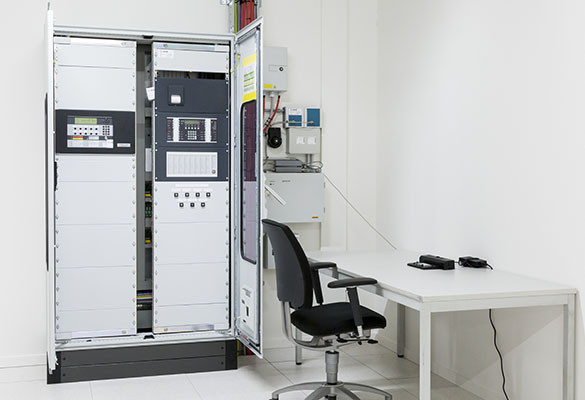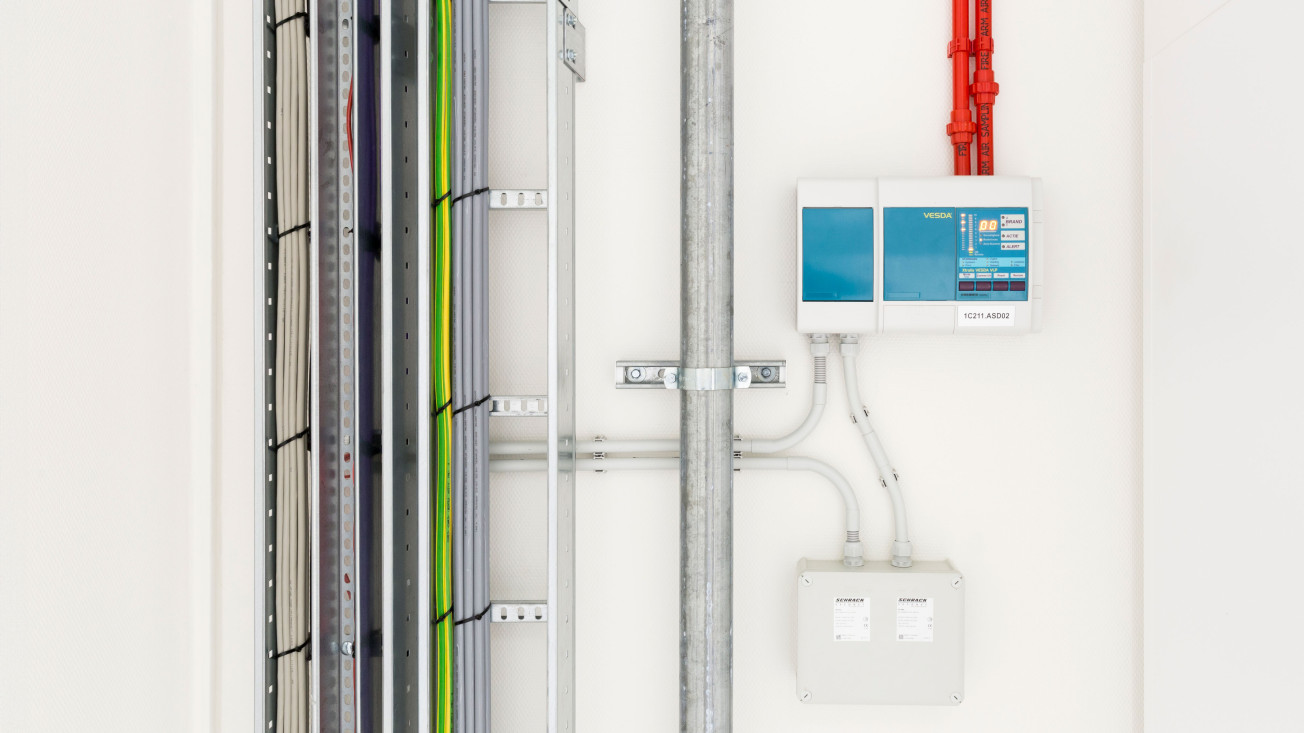An aspiration detection system is a highly sensitive form of fire detection that can detect a fire at an early stage. The system takes samples of the air and tests them for the presence of smoke. The air is drawn by a pump from the various test points. In the detection unit, the air sample passes through a synthetic two-phase filter in order to remove dust particles and other contaminants, before going into the detection chamber, where a laser light source tests it for smoke particles.

Features
Where can aspiration detection be appliedd?
- If early warning is required;
- At high air speeds;
- In extreme conditions (very cold/hot);
- If detection needs to be invisible;
- If maintenance is difficult.

The system
How is the system built?
- Aspiration pipes;
- ASD sampling chamber;
- Fire alarm panel;
- Air pump.
Different forms of aspiration detection
Aspiration systems come in two types: normal (ASD) and high sensitivity (HSSD).
ASD (Aspiration Smoke Detection) is designed for situations where normal smoke detectors are difficult to employ or undesirable. It is based on optical detection and uses conventional smoke detectors.
HSSD (High Sensitive Smoke Detection) is designed for situations where the chances of false alarms must be kept to an absolute minimum. Its sensitivity can be set up to 1,000 times higher than a conventional smoke alarm. A very early alarm when a fire is just starting is assured, keeping damage to a minimum.

Why aspiration?
Benefits at a glance
- Very high sensitivity;
- Flexible setting options;
- Compact;
- Versatile;
- Various system options.
